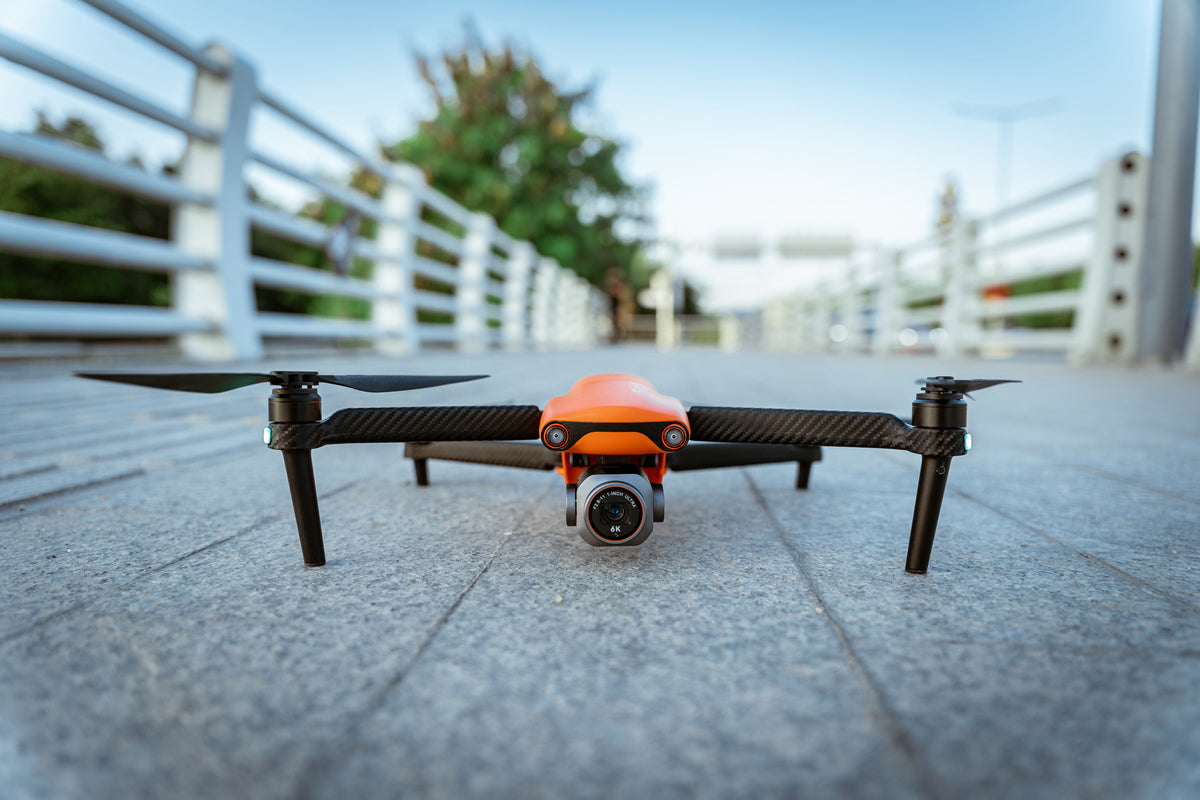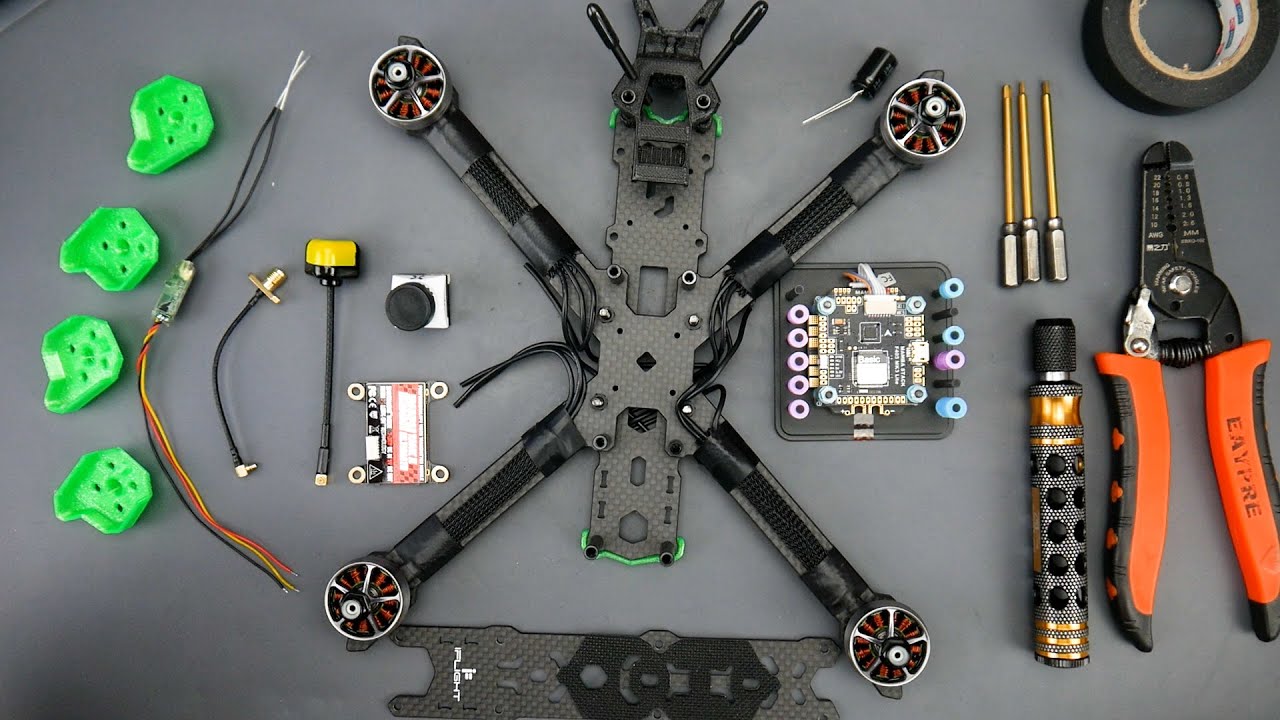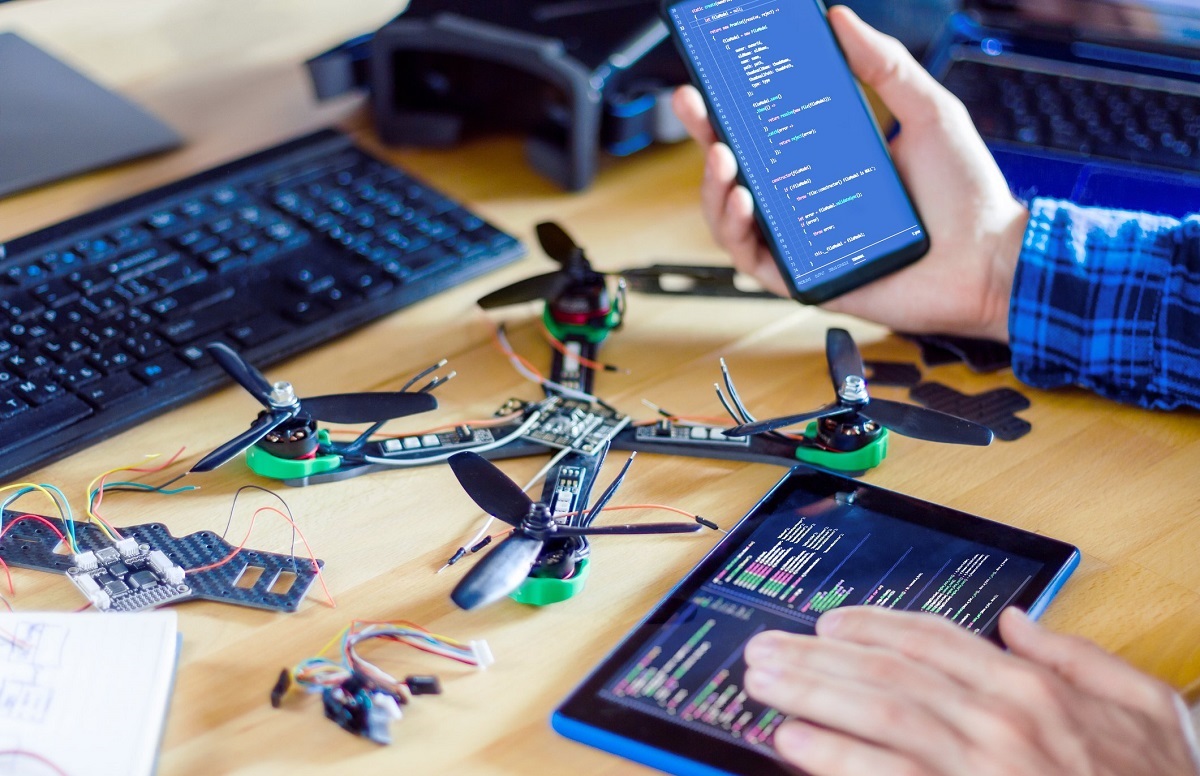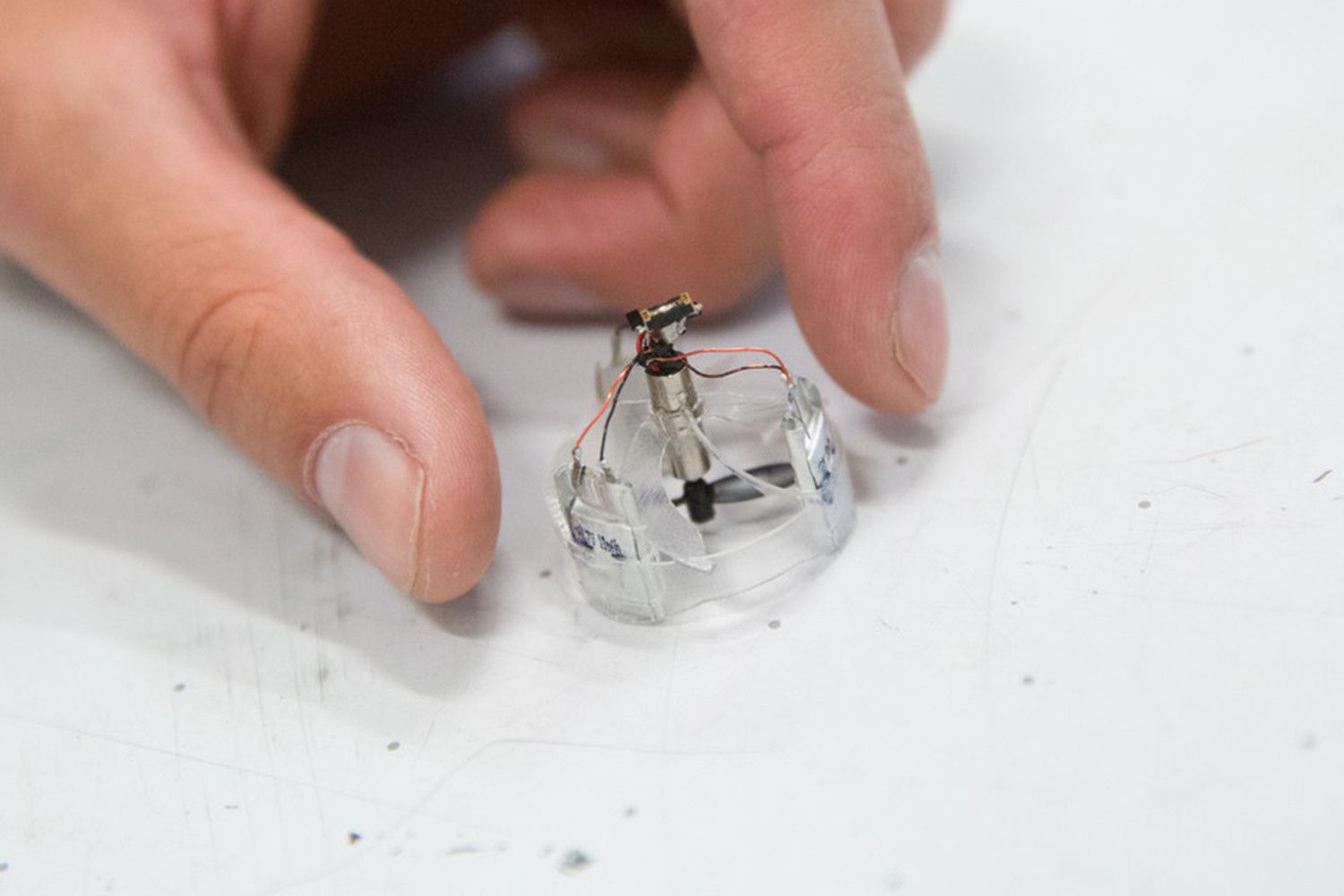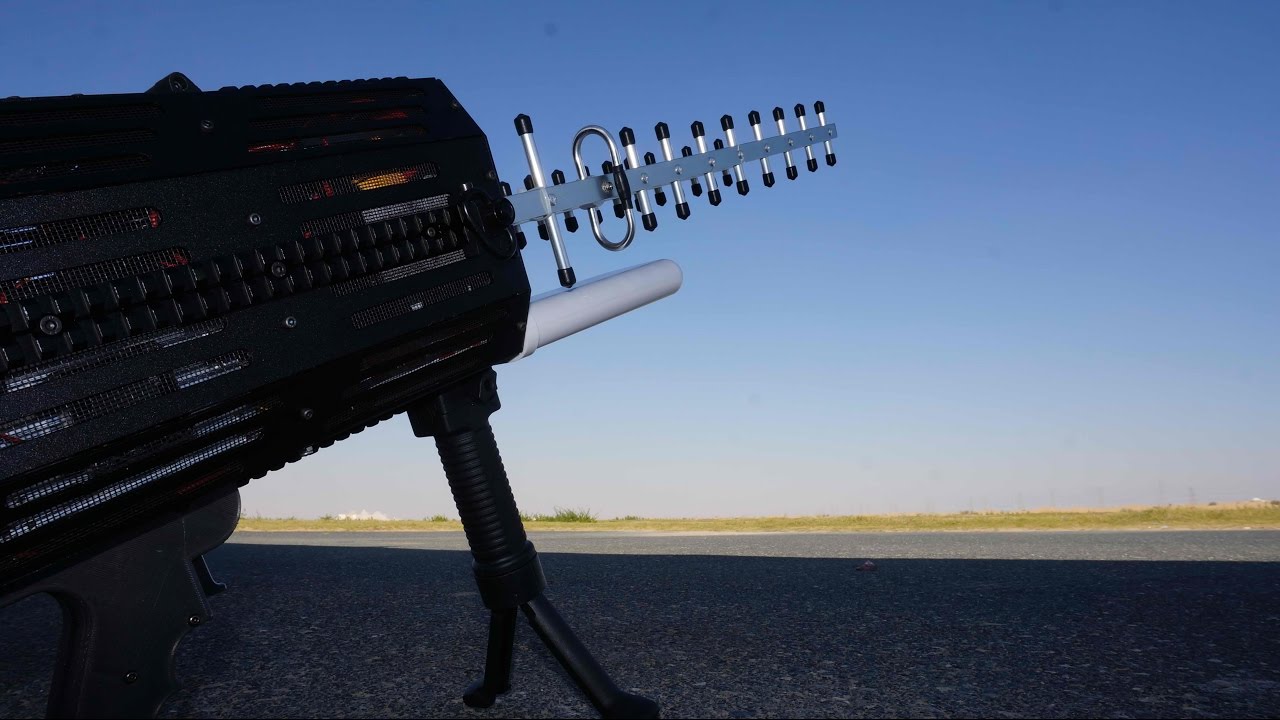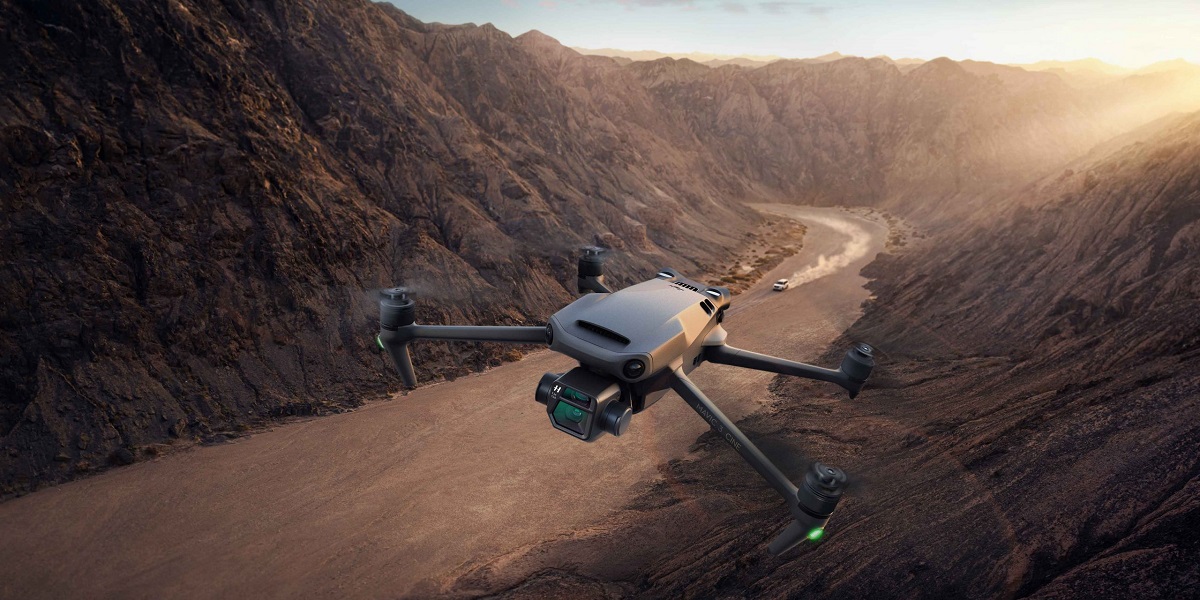Introduction
Choosing the right drone can be an exciting yet daunting task. With so many options available in the market, it’s important to consider various factors before making a decision. Whether you’re an aerial photography enthusiast, a technology enthusiast, or simply looking to explore the world from a different perspective, drones offer a unique and thrilling experience.
Before diving into the world of drones, it’s essential to understand your needs and expectations. Are you looking for a drone with a high-quality camera to capture stunning aerial shots? Or are you more interested in a drone that focuses on flight performance and agility? By considering these factors and more, you can make an informed decision that suits your specific requirements.
In this guide, we’ll discuss the key considerations to keep in mind before buying a drone. From understanding different types of drones to evaluating factors like flight time, camera quality, controls, and budget, we’ll help you navigate through the vast array of options available in the market.
Remember, choosing the right drone is not only about finding the most advanced or expensive one. It’s about finding the perfect balance between features, performance, and affordability. So let’s delve into the world of drones and explore how to choose the one that best fits your needs.
Considerations before Buying a Drone
When embarking on your drone buying journey, it’s important to take several factors into consideration to ensure you make the right choice. Below are some key considerations to keep in mind:
- Intended Use: Determine the purpose of your drone. Are you planning to use it for recreational purposes, aerial photography, or professional filmmaking? Different drones are designed with specific functionalities, so it’s crucial to select one aligned with your intended use.
- Skill Level: Assess your skill level as a drone operator. If you’re a beginner, opting for a drone equipped with beginner-friendly features such as stabilization assistance and obstacle avoidance systems is essential. Professional-grade drones might be overwhelming if you’re just starting out.
- Flight Environment: Consider where you’ll primarily be flying your drone. If you plan to fly it indoors, a smaller and more maneuverable drone is recommended. Outdoor flying may require a drone with better stability and wind resistance.
- Regulations and Licensing: Familiarize yourself with the local regulations and laws regarding drone usage in your area. Some jurisdictions require licenses or permits for certain types of drones or specific flying locations.
- Budget: Establish a budget range for your drone purchase. Drones vary significantly in price, and it’s important to find one that meets your needs without breaking the bank. Consider additional costs such as spare batteries, propellers, and accessories as well.
- Spare Parts and Repairs: Check the availability and cost of spare parts for the drone model you’re interested in. Accidents happen, and having easily accessible spare parts and reliable repair services can save you time and frustration.
- Reviews and Recommendations: Research and read reviews from trusted sources to gain insights into the drone’s performance, durability, and customer satisfaction. Additionally, seek recommendations from experienced drone users or join online communities to gather valuable advice.
By carefully considering these factors, you can narrow down your options and choose a drone that aligns with your requirements, skill level, and budget. Remember, selecting the right drone is the first step towards an enjoyable and fulfilling aerial experience.
Types of Drones
Drones come in various types, each designed with specific features and functionalities. Understanding the different types will help you determine which one suits your needs. Here are some common types of drones:
- Consumer Drones: Consumer drones are the most widely available and commonly used type of drones. They are designed for recreational purposes and are generally compact, lightweight, and easy to fly. Consumer drones often come equipped with built-in cameras that offer decent image quality for aerial photography and videography.
- Professional Drones: Professional drones are specifically designed for commercial applications such as aerial photography, filmmaking, surveying, and inspection. These drones often have advanced features like high-resolution cameras, heavy payload capacity, and longer flight times. They are typically larger, more powerful, and can withstand challenging weather conditions.
- Racing Drones: Racing drones are built for speed and agility. They are popular among drone racing enthusiasts who compete in high-speed races through obstacle courses. Racing drones are lightweight, maneuverable, and equipped with powerful motors and FPV (First Person View) technology to provide an immersive experience.
- Toy Drones: Toy drones are affordable and designed for children or beginners who want to explore the world of drones. These drones are usually smaller in size, have simplified control systems, and often lack advanced features like built-in cameras. Toy drones are a great way to practice flying skills before moving on to more advanced models.
- Enterprise Drones: Enterprise drones are specifically tailored for industrial or business use. They are equipped with features like thermal imaging cameras, robotic arms, or specialized sensors for applications such as agricultural inspections, search and rescue missions, or infrastructure monitoring. Enterprise drones are typically more expensive and require specialized training to operate.
Each type of drone has its own advantages and limitations, so it’s important to consider your specific needs and use cases. Whether you’re a hobbyist, professional, racer, or business owner, there’s a drone type that suits your requirements. Researching and understanding the different types of drones will help you make an informed decision and choose the one that best aligns with your intended use.
Flight Time and Battery Life
Flight time and battery life are critical factors to consider when choosing a drone. The flight time refers to the duration a drone can stay airborne on a single battery charge. Battery life, on the other hand, refers to the overall lifespan of the drone’s batteries before they need to be replaced. These factors directly impact the usability and enjoyment of your drone. Here’s what you need to know:
The flight time of a drone can vary significantly depending on factors like drone size, weight, battery capacity, and flying conditions. Most consumer drones offer an average flight time of around 20-30 minutes, while professional drones can extend up to 45 minutes or more. It’s important to note that the actual flight time may be shorter due to factors like wind conditions, payload, and aggressive flying maneuvers.
When assessing the battery life of a drone, consider the availability and affordability of spare batteries. Having extra batteries allows you to extend your flying sessions without waiting for the batteries to recharge. Additionally, check the charging time required for the drone’s batteries. Quick-charging capabilities can significantly reduce downtime between flights.
It’s essential to manage your expectations regarding flight time and battery life. While longer flight times are desirable, they typically come with a higher price tag. Additionally, keep in mind that drone technology is constantly evolving, and new models may offer longer flight times and improved battery performance.
To maximize flight time and battery life, it’s important to follow best practices. These include calibrating the drone’s compass, avoiding excessive payload, flying in suitable weather conditions, and properly maintaining and storing the batteries. Regularly updating the drone’s firmware can also optimize battery performance and enhance flight capabilities.
Lastly, consider investing in additional accessories like portable chargers or car chargers if you plan to take your drone on outdoor adventures or trips. These accessories can help ensure that you have enough power to keep your drone flying for longer periods.
Ultimately, evaluating flight time and battery life will help you determine the amount of time you can spend flying your drone and the convenience in managing its power supply. By considering these factors, you can select a drone that aligns with your desired flight duration and battery needs.
Camera Quality
For many drone enthusiasts, capturing stunning aerial imagery is one of the main reasons to invest in a drone. Therefore, the camera quality is a crucial consideration when choosing a drone. Here are some key factors to evaluate when assessing the camera quality:
Resolution: The resolution of the camera determines the level of detail and clarity in the captured images and videos. Common resolutions for drone cameras include HD (720p), Full HD (1080p), 2.7K, 4K, and even higher in professional-grade drones. Higher resolution cameras provide sharper visuals and allow for more flexibility in post-processing and cropping.
Image Stabilization: Image stabilization technology is essential for ensuring smooth and shake-free footage. Drones may offer either mechanical stabilization through gimbals or electronic stabilization in the camera software. Mechanical stabilization is generally more effective and preferred for professional-quality footage, while electronic stabilization can be sufficient for casual use.
Aperture and Sensor Size: The aperture of the camera lens determines the amount of light entering the sensor, thus affecting the overall image quality, especially in low-light conditions. A larger sensor size and wider aperture provide better image quality and dynamic range. This allows for capturing more details in challenging lighting scenarios.
Photography Modes: Some drones offer various photography modes, such as HDR (High Dynamic Range), Burst Mode, or Time-lapse, which can enhance the versatility and creative possibilities of your aerial photography. These modes enable you to capture stunning landscapes, action shots, and unique perspectives.
Video Capabilities: If you plan to shoot videos with your drone, it’s essential to consider the supported video formats and frame rates. Look for features like slow-motion recording, cinematic modes, and log profiles, which provide more flexibility in post-production editing and color grading.
Live Video Streaming: Many drones now offer live video streaming capabilities, allowing you to view the drone’s point of view in real-time on your mobile device. This feature is particularly useful for framing shots and ensuring optimal composition while in flight.
It’s important to keep in mind that higher camera quality often comes at a higher price. If you are a professional photographer or filmmaker, investing in a drone with a high-quality camera is crucial for achieving professional-level results. However, if you are a casual user or beginner, a drone with a more modest camera may suffice for capturing memorable moments and exploring aerial photography.
Lastly, don’t forget to assess the quality of the accompanying app or software that controls the camera settings and allows for image/video preview and editing. User-friendly software can greatly enhance your overall photography experience and workflow.
By considering these factors and assessing your specific needs as a photographer or videographer, you can make an informed decision and choose a drone with the right camera quality to capture breathtaking aerial visuals.
Range and Controls
When selecting a drone, it’s essential to consider the range and controls to ensure a smooth and enjoyable flying experience. Here are important factors to evaluate:
Range: The range of a drone refers to the maximum distance it can travel from the remote controller before losing connection. It’s crucial to choose a drone with a range that suits your intended use. If you plan to fly in wide open areas or require long-distance flights, opt for a drone with a long range. Keep in mind that legal restrictions may limit the maximum range in certain locations.
Signal Strength: Apart from range, signal strength is also important. Ensure that the drone and remote controller have a reliable signal connection to prevent signal dropout or interference. Drones with advanced signal transmission technologies like OcuSync or Lightbridge often provide better signal stability and resistance to interference.
Remote Controller: Evaluate the design and functionality of the drone’s remote controller. Comfortable ergonomics, intuitive layout, and responsive controls contribute to a better flying experience. Some controllers also feature integrated screens for live video streaming, eliminating the need for a separate mobile device.
Flight Modes: Look for drones that offer different flight modes for added convenience and versatility. Common flight modes include Follow Me, Waypoints, Orbit, and Active Track. These modes automate flight routes, object tracking, and other advanced maneuvers, allowing you to focus on capturing amazing footage.
Autonomous Features: Consider the presence of autonomous features such as obstacle avoidance, return-to-home, and automatic landing. These features enhance safety and ease of use, especially for beginner pilots or when flying in complex environments.
Mobile App Integration: Evaluate the companion mobile app integration and functionality. A well-designed app can provide additional flight information, camera control, and access to advanced features. It can also offer flight telemetry data, flight logs, and firmware updates for improved performance and safety.
First Person View (FPV): FPV capability allows you to view the real-time video feed from the drone’s camera on a separate display or through smartphone VR goggles. This immersive flying experience can enhance your control and precision, especially for aerial photography or racing.
Before purchasing a drone, ensure that the range and control features align with your flying preferences and requirements. If you plan to fly in remote or challenging locations, a drone with extended range and strong signal strength is essential. On the other hand, if you prefer more automated flights and convenience, look for drones with advanced flight modes and autonomous features.
By carefully considering the range and controls of a drone, you can select a model that provides a seamless and enjoyable flying experience, enhancing your ability to capture incredible aerial footage.
GPS and Smart Features
The integration of GPS technology and smart features in drones has revolutionized the way they operate and opened up new possibilities for aerial exploration and photography. Here are some key aspects to consider when evaluating GPS and smart features in a drone:
GPS Positioning: GPS is essential for precise positioning and flight stability. Drones equipped with GPS can autonomously hold their position in the air, allowing for smoother footage and easier control. GPS also enables features like return-to-home and automatic landing in case of signal loss or low battery.
Waypoint Navigation: Waypoint navigation enables you to pre-program a flight path using GPS coordinates. By setting waypoints on a map, the drone follows the designated route automatically. This feature is especially useful for capturing cinematic shots or surveying large areas.
Follow Me Mode: Follow Me mode allows the drone to track and follow a subject while maintaining a constant distance. This enables hands-free filming and creates dynamic shots. Some drones even offer advanced tracking capabilities, such as visual recognition or subject tracking.
Geofencing: Geofencing is a safety feature that uses GPS to create virtual boundaries or no-fly zones. It helps prevent the drone from flying into restricted areas, such as airports or government facilities. Geofencing ensures compliance with local regulations and enhances the overall safety of your flights.
Obstacle Detection and Avoidance: Drones equipped with obstacle detection sensors or cameras can detect and avoid obstacles in their flight path. This feature enhances flight safety, especially in complex or crowded environments. The drone can either autonomously navigate around obstacles or provide alerts to the pilot to take action.
Intelligent Flight Modes: Many drones offer intelligent flight modes that automate specific flight patterns or maneuvers. These modes include orbiting a specific point, tracking a moving subject, or performing cinematic camera movements. Intelligent flight modes enable you to capture professional-quality shots with ease.
Telemetry Data: Telemetry data provides real-time flight information such as altitude, speed, distance, and battery level. This allows you to monitor and analyze the drone’s performance during flight and make informed decisions for optimal flight control and safety.
App Integration and Updates: Check if the drone’s companion app offers seamless integration with GPS and smart features. The app should provide access to additional functions, flight telemetry, and allow for firmware updates. Regular firmware updates ensure that your drone remains up-to-date with the latest features and safety enhancements.
GPS and smart features greatly enhance the usability, safety, and overall flying experience of a drone. By considering these features, you can choose a drone that offers advanced capabilities for precise positioning, intelligent flight modes, and automated functions. Whether you’re a professional filmmaker or an aerial enthusiast, GPS and smart features will take your drone flying to new heights of creativity and convenience.
Size and Portability
The size and portability of a drone are important considerations, especially if you plan to travel with your drone or have limited storage space. Here’s why size and portability matter:
Compactness and Weight: Compact drones are generally easier to carry and transport. They are lightweight and can be packed into a smaller bag or case. This is particularly beneficial if you plan to hike, travel, or capture shots in remote locations where portability is key.
Foldable Designs: Some drones offer foldable designs, allowing the drone’s arms and propellers to be folded inwards for a more compact form. This feature makes storage and transportation even more convenient. Foldable drones are often preferred by travelers and outdoor enthusiasts.
Transportation Bag or Case: Consider whether the drone comes with a transportation bag or case. A well-designed bag or case provides protection during transport and keeps all the essential accessories organized. Look for options that offer ample padding, compartments, and durable materials.
Assembly and Setup: Assess the ease of assembly and setup for the drone. Portable drones should have a quick and straightforward setup process, allowing you to get in the air in no time. Avoid drones that require complex or time-consuming assembly, especially if you’re frequently on the move.
Flight Controller Integration: For added convenience, check if the drone integrates with a smartphone or tablet for flight control. Many drones offer companion apps that allow you to control the drone using your mobile device. This reduces the need for carrying a separate remote controller, saving space and weight.
Flight and Storage Space: Consider the space requirements for flying and storing the drone. If you have limited flying space or access to large open areas, opting for a smaller drone makes maneuvering easier. Similarly, if storage space is a concern, choose a drone that can be stored conveniently in a small area.
Compatibility with Accessories: Keep in mind that the size and portability of the drone may impact compatibility with certain accessories. For example, smaller drones may have limitations when it comes to attaching additional payloads or specialized cameras. Ensure that the drone’s size does not hinder its functionality for your specific needs.
By factoring in size and portability, you can determine the level of convenience and flexibility you desire in a drone. Whether you plan to take it on adventurous journeys or simply need a compact drone for everyday use, understanding and prioritizing these aspects will help you find the perfect balance between functionality and portability.
Budget
When it comes to buying a drone, your budget is a crucial factor to consider. Drones come in a wide range of prices, and it’s important to determine how much you’re willing to invest. Here’s why budget matters:
Features and Performance: Higher-priced drones often come with advanced features, better camera quality, longer flight times, and more precise controls. If you’re a professional photographer or filmmaker, investing in a higher-budget drone can provide you with the capabilities you need to capture exceptional aerial shots. However, if you’re a beginner or on a tighter budget, there are still quality drones available with more limited features.
Build Quality and Durability: In general, higher-priced drones usually have better build quality and are built with more durable materials. This makes them more resistant to crashes and impacts. Cheaper drones may be more susceptible to damage and wear and tear, so it’s important to assess your budget and weigh it against the longevity you desire from your drone.
Support and Warranty: Consider the level of customer support and warranty offered by the drone manufacturer. Higher-budget drones often come with better customer support and longer warranty periods, providing you with peace of mind in case any issues arise. Cheaper drones may have limited support or shorter warranty periods, which could lead to additional expenses for repairs or replacement parts.
Additional Costs: Keep in mind that there may be additional costs associated with owning a drone. Accessories like spare batteries, propellers, carrying cases, and memory cards may need to be purchased separately. It’s important to factor in these additional costs when considering your overall budget for buying a drone.
Value for Money: Consider the overall value for money that a drone offers based on its features, performance, durability, and support. Sometimes a mid-range or slightly higher-budget drone may provide better value for your specific needs compared to an entry-level or significantly higher-priced model.
Future Upgrades and Expansion: Assess whether the drone you choose allows for future upgrades or expansion. Some drones have modular designs or accessory compatibility that enables you to add or upgrade certain components in the future, saving you from having to buy an entirely new drone as your needs evolve.
Remember, while it’s tempting to opt for the most expensive drone with all the bells and whistles, it’s crucial to find a balance between your budget and the features you truly need. Assess your requirements, consider the trade-offs, and read reviews from trusted sources to ensure that the drone you choose offers the best value for your investment.
Conclusion
Choosing the right drone is an exciting process but requires careful consideration of several factors. By evaluating your needs, preferences, and budget, you can narrow down the options and find the perfect drone for your aerial adventures. Here’s a recap of the key points discussed:
Before purchasing a drone, consider the intended use of the drone and your skill level as a pilot. Understanding these aspects will help you determine the type of drone that suits your needs, whether it’s a consumer drone for recreational purposes or a professional-grade drone for commercial applications.
Evaluate the flight time and battery life of the drone to ensure you have enough airtime and minimize downtime due to recharging. Additionally, consider the camera quality and the features it offers, such as image stabilization, resolution, aperture, and video capabilities.
Range and controls are important factors to consider for a seamless and enjoyable flying experience. Assess the range of the drone, signal strength, flight modes, and features like GPS, waypoint navigation, and obstacle avoidance. These features enhance flight control, safety, and creativity.
The size and portability of the drone are relevant, especially if you plan to travel or have limited storage space. Compact and lightweight drones offer convenience and ease of transport. Evaluate the foldability, assembly process, and compatibility with accessories to ensure the drone fits your portability needs.
Lastly, determine your budget and assess the overall value that different drones offer based on their features, performance, durability, and support. It’s important to strike a balance between the features you need and the budget you have allocated for your drone purchase.
By considering these factors and doing thorough research, you can find a drone that aligns with your needs, enables you to capture breathtaking aerial imagery, and provides an incredible flying experience. So, get ready to take flight and explore the world from a whole new perspective with your chosen drone!







